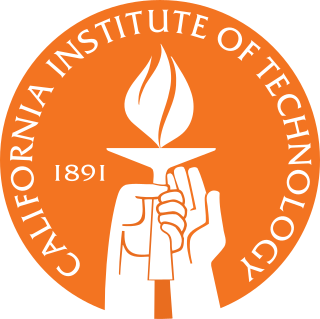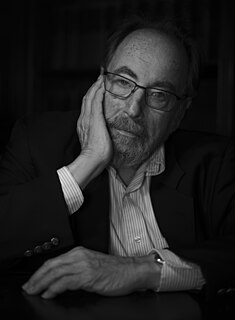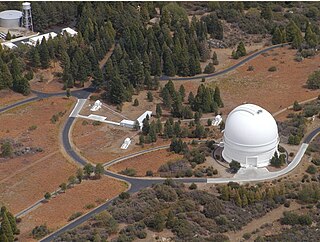Related Research Articles

The California Institute of Technology (branded as Caltech) is a private research university in Pasadena, California. The university is known for its strength in science and engineering, and is among a small group of institutes of technology in the United States which is primarily devoted to the instruction of pure and applied sciences. Caltech is ranked among the best academic institutions in the world and is among the most selective in the U.S.

David Baltimore is an American biologist, university administrator, and 1975 Nobel laureate in Physiology or Medicine. He is President Emeritus and Distinguished Professor of Biology at the California Institute of Technology (Caltech), where he served as president from 1997 to 2006. He also served as the director of the Joint Center for Translational Medicine, which joined Caltech and UCLA in a program to translate basic scientific discoveries into clinical realities. He also formerly served as president of Rockefeller University from 1990 to 1991, founder and Director of the Whitehead Institute of Biomedical Research from 1982 to 1990, and was president of the American Association for the Advancement of Science in 2007.

Gordon Earle Moore is an American businessman, engineer, and the co-founder and chairman emeritus of Intel Corporation. He is also the original proponent of Moore's law.

Qian Xuesen, or Hsue-Shen Tsien, was a Chinese mathematician, cyberneticist, aerospace engineer, and physicist who made significant contributions to the field of aerodynamics and established engineering cybernetics. Recruited from MIT, he joined Theodore von Kármán's group at Caltech.

Palomar Observatory is an astronomical research observatory in San Diego County, California, United States, in the Palomar Mountain Range. It is owned and operated by the California Institute of Technology (Caltech). Research time at the observatory is granted to Caltech and its research partners, which include the Jet Propulsion Laboratory (JPL), Yale University, and the National Optical Observatories of China.

William Alfred Fowler (9 August 1911 – 14 March 1995) was an American nuclear physicist, later astrophysicist, who, with Subrahmanyan Chandrasekhar, won the 1983 Nobel Prize in Physics. He is known for his theoretical and experimental research into nuclear reactions within stars and the energy elements produced in the process and was one of the authors of the influential B2FH paper.

The house system is the basis of undergraduate student residence at the California Institute of Technology (Caltech). Caltech's unique house system is modeled after the residential college system of Oxford and Cambridge in England, although the houses are probably more similar in size and character to the Yale University residential colleges and Harvard University house system. Like a residential college, a house embodies two closely connected concepts: it serves as both a physical building where a majority of its members reside and as the center of social activity for its members.

Peter the Venerable, also known as Peter of Montboissier, was the abbot of the Benedictine abbey of Cluny. He has been honored as a saint, though he was never canonized in the Middle Ages. Since in 1862 Pope Pius IX confirmed his historical cult, and the Martyrologium Romanum, issued by the Holy See in 2004, regards him as a Blessed.

Richard Salisbury Ellis is Professor of Astrophysics at the University College London. He previously served as the Steele Professor of Astronomy at the California Institute of Technology (Caltech). He was awarded the 2011 Gold Medal of the Royal Astronomical Society. and the 2022 Royal Medal of the Royal Society.

John Dombrowski Roberts was an American chemist. He made contributions to the integration of physical chemistry, spectroscopy, and organic chemistry for the understanding of chemical reaction rates. Another characteristic of Roberts' work was the early use of NMR, focusing on the concept of spin coupling.

HMS Venerable was a 74-gun third-rate ship of the line of the Royal Navy, launched on 12 April 1808 at Northfleet.

Adam Kazimierz Kolawa was CEO and co-founder of Parasoft, a software company in Monrovia, CA that makes software development tools.
South Lake is a neighborhood in Pasadena, California. It is Pasadena's premier shopping district and home to the California Institute of Technology. South Lake is bordered by Colorado Boulevard to the north, the Pasadena–San Marino border to the south, Hudson Avenue to the west, and Hill Avenue to the east.
Hugh David Politzer is an American theoretical physicist and the Richard Chace Tolman Professor of Theoretical Physics at the California Institute of Technology. He shared the 2004 Nobel Prize in Physics with David Gross and Frank Wilczek for their discovery of asymptotic freedom in quantum chromodynamics.
Norman Ralph Davidson was an American molecular biologist notable for advancing genome research, member of the National Academy of Sciences, received a National Medal of Science from U.S. President Bill Clinton, was a professor at Caltech. The New York Times called Davidson "major figure in advancing genome research ... whose groundbreaking work in molecular biology led to the earliest understanding of the overall structure of genomes". The Los Angeles Times called him "a groundbreaking Caltech chemical biologist". President Bill Clinton cited the scientist for "breakthroughs in chemistry and biology which have led to the earliest understanding of the overall structure of genomes".

John D. Baldeschwieler is an American chemist who has made significant contributions in molecular structure and spectroscopy.

Jenijoy La Belle (1943) is an American professor emeritus of English literature at California Institute of Technology. Hired in 1969, she became the first female professor in Caltech history. She is known for her fight to attain tenure in the early '70s, also at Caltech. She was granted tenure in 1979. She retired in 2007.
K2-138b is a potentially rocky Super-Earth exoplanet orbiting every 2 days around a K1V star. The planet, along with the four others in the system, was found by citizen scientists of the Exoplanet Explorers project on Zooniverse. It was the final planet found in the system and was officially announced on January 8, 2018.

Sunney Ignatius Chan is an American-born biophysical chemist. His work primarily focused on the use of various magnetic resonance spectroscopic and other physical chemical techniques in the analysis of various biochemical and biological problems.
The history of the house system at the California Institute of Technology encompasses both the history of the physical houses and of the student self-governance and culture associated with them. The Caltech house system currently encompasses eight houses: the South Houses constructed in 1931 hosts four houses, the North Houses constructed in 1960 hosts three, and Avery House constructed in 1996.
References
- ↑ "Caltech Marks the Dedication of the Grant D. Venerable House" . Retrieved 2022-10-27.